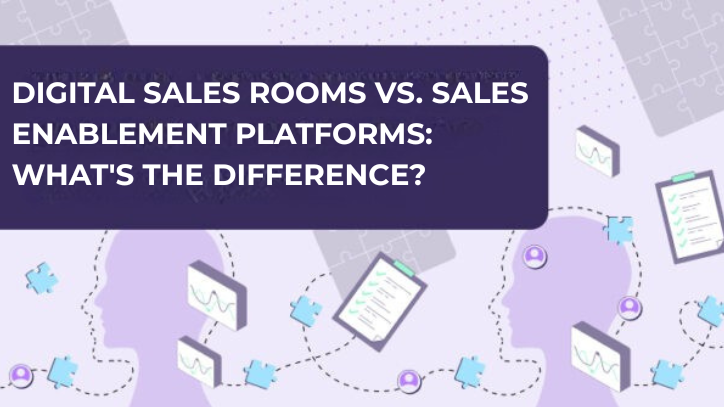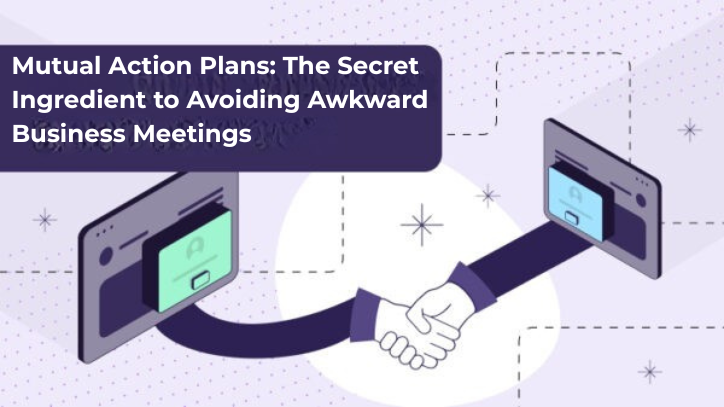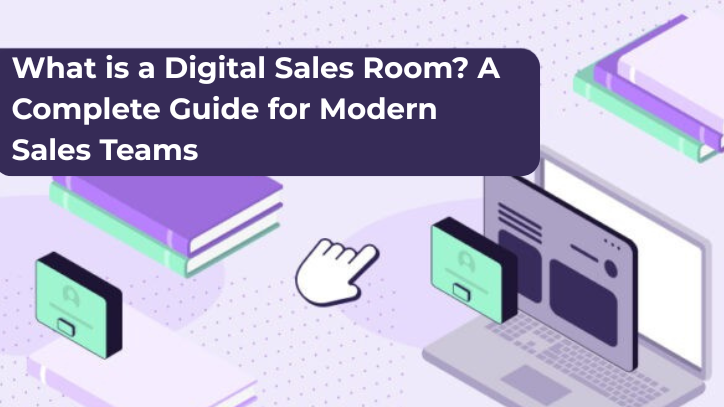Updated on July 14, 2024.
“OBJECTION, YOUR HONOR!”
While this is how objections often sound in a courtroom drama, B2B sales objections are usually less dramatic.
Throughout the course of a sale, you’ll likely have to sidestep or overcome a few objections from your prospect. Being able to skillfully pass through these objections is what separates the good sales rep from the great sales reps.
Want to redefine sales greatness? We’re here to help with how to handle objections in sales.
What is objection handling?
Imagine that you’re selling to your prospects and they bring up an issue or two that they have with your product. Or imagine that they suggest a reason why they are not interested in buying. This can happen during the first phone call or further down the line when you start discussing the product’s details.
Objection handling is when the sales rep is able to successfully respond to this objection and satisfy the prospect enough to continue on the sales process.
There are many reasons why a buyer can object to your product. Some of the most common ones have to do with the product’s price, the product’s fit for the customer, the product’s features, and your competition.
Objection handling vs. negotiating
Before we get into common objections, it’s important to know the difference between these two stages to make sure you don’t do one when the moment calls for the other.
When your prospect is determining whether they want your product or whether it can solve their pain points, then you need to handle their objections. Your goal at that moment is to validate their concern but assure them that your product is still useful for them.
Negotiation, however, is useful only after the prospect decides they want the product. Then, depending on the specific circumstances, you may want to negotiate the deal with your prospect to make sure both sides can arrive at a mutually beneficial outcome.
Once you reach the negotiation stage, don’t revert to object handling. You’re no longer trying to convince your prospects that they need your product. Likewise, when you’re still in the selling stage, don’t start negotiating or you may weaken your case.
Objections vs. obstructions
In SaaS sales, objections and obstructions are distinct challenges that salespeople face.
Objections are specific concerns or reservations expressed by potential customers about the product, service, or purchase. These might include price, features, or perceived value. Objections are often opportunities for salespeople to address concerns and provide more information.
Obstructions, on the other hand, are barriers that prevent the sale from progressing. These can be internal like lack of budget and availability of decision-makers, or external like competition or market conditions. Obstructions typically require strategic problem-solving and patience to overcome.
While objections can often be addressed directly through conversation and negotiation, obstructions may require more time and a broader approach to resolve. Successful SaaS sales professionals must develop strategies to handle both effectively.
Why objection handling is important in B2B sales
Letting objections simmer unaddressed is like leaving a ticking time bomb in your sales pipeline.
The longer a prospect holds onto a concern, the more it becomes ingrained in their decision-making process. And the harder you’ll have to work to dislodge it.
Instead of fearing objections, embrace them as golden opportunities for dialogue and deeper understanding. Proactively seek out concerns by peppering your conversations with targeted questions such as:
- “What potential roadblocks do you foresee in implementing our solution?”
- “On a scale of 1-10, how confident are you that we can meet your needs? Why not a 10?”
- “I sensed some hesitation when we discussed X. Can you share your thoughts on that?”
- “What aspects of our product, if any, give you pause?”
By surfacing objections early and often, you transform potential deal-killers into stepping stones toward a more robust and confident buying decision.
Types of sales objections and how to handle them
Depending on your product, your offering, and your business model, prospects may have many different objections.
Nonetheless, in B2B sales, most customers object to the same elements. Here are some of the most common objections.
1. No budget: “It’s too expensive”
This is the most common objection because it’s the biggest risk that prospects face when making a large purchase.
People work hard for their money. (Just ask Donna Summer.) When laying out a big sum of cash, they want to make sure they are not overspending and wasting hard-earned funds.
Companies often have specific budgets that are allotted for different types of solutions, so they’ll need to know that the value they will be receiving from your product justifies the monetary investment they are putting in.
How to handle it:
- Focus on value. Help the prospect understand what they stand to gain from the product. Stress the ROI (return on investment) and the ways in which they can use the product to enhance their lives.
- Offer flexible options. Break down your product’s offerings so that there are different options to choose from depending on the prospects’ budget. Create different bundles and packages targeted towards different customers.
- Split up the price. Instead of presenting the price in terms of the year, break it down into chunks. Charge by week or month, or by number of users.
2. No need: “This won’t help us”
Sometimes your prospects aren’t looking for what you’re selling. In this case, they simply don’t have the pain points that your product solves.
But other times, they don’t yet understand how your solution can benefit them.
It’s important to clarify the difference between these two types of prospects as early as possible in the sales process to avoid trying to make the sale happen where it doesn’t fit. Listen carefully to what the prospect’s needs are and use your understanding of your product to help them see if and how your solution can help them.
How to handle it:
- Do your homework. Build your prospect’s trust in you by making it clear that you understand their world. Make sure you learn about your prospect’s industry and research their company as well as their competition.
- Listen carefully. Gain a clear understanding of your prospect’s experience. Validate their concerns while identifying areas where your product can help them in their current workflow. Once you find them, take your time and ask more questions to make sure you get to the bottom of their pains.
- Show them that they need it. While your words may fall on deaf ears, you can send them an interactive product demo that’ll allow them to try your product for themselves and see how it can be useful for them.
- Be goal-oriented. When explaining the need for your product, put stress on the implications of using your product instead of the steps they’ll need to do to get there. Discuss the desired outcomes and targets of the prospect and how your product will help.
3. No urgency: “Not right now”
In this objection, the client may not come out and say it, but you’ll get the vibe from the way they are treating you. They may not be responding to you or they may be scheduling the next call very far into the future. That’s because you haven’t yet built urgency.
When there’s no urgency, it’s hard to seal the deal. Prospects will allocate their budget and time to more pressing matters, leaving your deal to collect dust and die.
Prospects in this case don’t understand the extent of what they stand to gain from your product. Your product’s value seems less important to them than other matters.
How to handle it:
- Remind them of their pain. Consider this tip from Namogoo’s VP of Sales Rachel Shekhtman: “Remind your prospect regularly of their own pain while using their own words. Everything should always be tied back to it and when you use their own words, then it’s real to them. They are selling to themselves throughout the sales process.”
- Stress the intended output. If your product is meant to help businesses with their ROI, use numbers, data, and potential income to drive home how valuable your product is.
- Think long-term. Move past the initial gains and focus on how your product can help them in the long run.
4. No authority: “I don’t have the power”
When you’re prospecting, you may think you’re speaking to the right person when you’re not.
In fact, there may not be just one person who is the decision-maker. Author Brent Adamson found that an average of 6.8 buyers were involved in a B2B sale.
That means that your initial point of contact may not be the only relationship you need to foster.
How to handle it:
- Discuss the prospect’s role in the company. Early on in the process, or even before you reach out, learn about the prospect’s position in the company. Determine whether they are the right person to speak about this issue.
- Ask about company structure. Once you’re talking, find out about how purchases like these are made. Learn about who needs to be included in the conversation and how many decision-makers will be involved.
- Send a shareable link. Give a link to a personalized product demo to your prospect and tell them to share it with all the relevant decision-makers. Then you can schedule a call with all of them to move the conversation forward.
5. No trust: “Who dis?”
There are many levels of trust that you’ll need to build in your prospect in order to close the deal. They need to trust you as a salesperson, your company, and your product.
This can be especially true if your company is new and your prospects have not ever heard of what you do. In this case, you’ll need to show them that you are legit and honorable.
How to handle it:
- Be open and transparent. “Always make sure that you’re operating with radical transparency,” advises Sales Assembly CRO Matt Green. “Make sure that you are mindful of the fact and communicate to the prospect what makes sense and what doesn’t make sense.”
- Don’t be too pushy. Nobody likes those cliche salespeople who don’t genuinely consider the prospect’s needs, but just want to sell their product. If your prospect doesn’t need it, don’t force it.
- Know your sh*t. Do your homework, learn the industry, listen to the prospect’s issues, and be a real consultant. Don’t just push your product, be useful to your prospect in other ways as well.
- Let them see it for themselves. Instead of needing to take your word for the product, send them a personalized sales demo so they can see for themselves how your SaaS product works and what they can accomplish with it.
The 10 Best Objection Handling Techniques
Regardless of the issue at hand, many techniques can be used when talking about the art of handling objections in sales.
As the saying goes, “It’s not about what you say, it’s about how you say it.”
That saying applies to objection handling as well. As opposed to only focusing on what you actually say in response to an objection, there are techniques you can use to change how you say it that’ll positively impact the exchange.
Here are a few of the top techniques to use when handling an objection:
1. Learn from the past
First, before you even get into a conversation with your prospect, take stock of what’s happened to you in the past. Think of the previous objections you’ve run into. If you were able to pass through the objection, why do you think that was? If you didn’t, what could you have done differently?
You can also ask some of your teammates for the top objections they’ve received and how they’ve handled them.
Show up to your sales call armed with all the relevant information you possibly can gather.
2. Take a minute
This advice is often given when someone says something that upsets you, but it’s important also when responding to a sales objection.
Don’t immediately launch into a rebuttal. You may want to. You may have to even hold yourself back from interrupting the prospect while they are expressing their objection. If you do interrupt them or speak over them, instead of calming the prospect down and helping them move past it, you’ll likely escalate the matter.
Instead, pause. Take a breath. Refocus yourself and take a moment to consider what they expressed and how you can best respond.
3. Repeat their words
Before you respond to the actual objection, repeat what they said back to them to make it really clear that you heard and understood them.
Express their objection in your own words. Not only will this let them know you’re actively listening to them, but it will also help you digest what they said and understand their point of view. The only way you’ll be able to truly handle their objection is if you fully understand what it is.
For example, say: “So from what I understand, you are saying that you are worried about X. Is that right?”
4. Validate their concerns
Next, give them validation. For this step, you need to put yourself in their shoes and understand what’s holding them back. Don’t minimize their worries—even in your own head.
Be human and transparent and you’ll be able to watch your prospect’s edge melt away. When they feel validated, they’ll be far more likely to trust you when you explain why their concern isn’t valid in this case or how you can help them move past it.
Here’s something you can say to validate their concerns: “Yeah, I totally understand how that can be a real issue. I’ve had X problem in the past as well and I know how annoying it can be. We actually are really mindful of this issue and have therefore taken X steps to alleviate it.”
5. Speak with confidence
Objections can feel threatening. You may need this deal really, really badly and this objection can ruin everything. But don’t let yourself get nervous. Prospects will sense this in your tone and immediately lose confidence in you.
Instead, focus on the value your product brings to the table and the pain points of the prospect that you can solve. Don’t get emotional or start rambling. Make it clear what you are offering and how you can help. Speak clearly and slowly and with authority.
6. Get to the bottom of things
Sometimes the issues the prospects are talking about are not the real issues. Or they’re just the surface-level issues when there is also a deeper, stronger reason for why they are hesitant.
For example, if a client brings up an issue you suspect may not be the real issue, ask: “If we would solve this issue, would there be anything else that may stand in the way of this deal?”
7. Show them what you’re talking about
So many times, prospect objections are a result of them not yet understanding the full value of the product and what they stand to gain from this deal. And, while you may be able to explain it to them if they are willing to sit and listen to you talk, it can be a lot easier to just show them what you mean.
Create a software demo that is personalized for your prospect. Identify the specific functionalities they would most benefit from and showcase them in your product tutorial. You can walk then them through it over a call, or send them a link to try it on their own time.
You can say: “I know that a lot of your concerns may be coming as a result of not having been able to see and feel our product for yourself. I’m going to send you a link where you can try out our platform. Play around with it, get a feel for how it works and how it can help with X pain point.”
8. Utilize social proof
Proven success is a convincing argument. Plus, everybody wants to do what the cool guys are doing.
Handle your prospects’ objections by showing them other clients who have had similar objections, but who have ended up using your product successfully. Gather quotes from them or even some numbers to support your argument.
The more information you have, the more you can help your prospects visualize themselves succeeding with your product.
9. Show the data
Don’t just tell them that they can succeed; prove it to them. Gather insights from your other B2B clients to share on sales calls.
If they’re concerned about cost, show them in numbers how your product’s value can return their investment. If they’re concerned about its functionality, show them in numbers how similar clients have used it to succeed.
10. Plan the next steps
Sometimes, your prospects may say they want some time to think things over. That can be great, but don’t let them ghost you.
Schedule a time for the next meeting before you hang up. They shouldn’t need a month. Make it a few days or a week in the future. This way, even if they end up rescheduling or canceling, they’ll need to reach out to you.
7 steps to overcome sales objections
Objections are opportunities in disguise.
Use these steps to turn hesitation into enthusiasm and close more deals.
Step 1: Lay the groundwork with thorough discovery
Before objections surface, conduct in-depth discovery using the C.L.A.R.I.T.Y. framework:
C – Challenges: What pressing issues is the prospect facing?
L – Limitations: How is their current solution falling short?
A – Aspirations: What are their long-term goals and vision?
R – Resources: Who controls the budget and decision-making?
I – Impact: What’s the cost of inaction or maintaining the status quo?
T – Timeline: When do they need a solution implemented?
Y – Yield: What ROI are they expecting from a new solution?
This framework equips you with crucial insights to address objections proactively.
Step 2: Welcome objections with open arms
When an objection arises, respond with genuine appreciation.
A simple “Thank you for sharing that concern” can work wonders. This approach builds trust and keeps the conversation flowing.
Step 3: Show empathy
Validate their concerns with statements like, “I completely understand why you’d feel that way.” This creates a safe space for prospects to open up further.
Step 4: Dive deep with probing questions
Use open-ended questions to uncover the real issues behind objections.
For instance, if they say, “It’s too expensive,” ask, “Can you help me understand what ‘too expensive’ means in the context of your budget and expected ROI?”
Step 5: Refresh their memory on value
Prompt the prospect to recall what excited them about your solution initially.
Ask, “What aspects of our product stood out to you as most beneficial?” This subtly shifts the conversation back to positives.
Step 6: Connect the dots
Synthesize everything you’ve learned.
Show how your solution addresses their specific challenges, aligns with their goals, and provides value that outweighs their concerns.
Step 7: Reinforce with evidence
Back up your claims with tailored social proof.
Share case studies, testimonials, or data that directly relate to the prospect’s industry or use case. This transforms your pitch from theoretical to practical.
By following these steps, you’ll transform objections from roadblocks into stepping stones toward closing the deal.
Remember, objection handling is an art. Practice and refine your approach to master it.
Sales tech to help with every step of the sales process
While you can’t control the objections that prospects will throw at you throughout the sales process, you can control your readiness to handle them.
Besides learning objection handling techniques and doing your homework, you can also arm yourself with the best and latest sales technology. Use a platform like Walnut to show your prospects what your product can do and let them try it for themselves.
This way, you’ll create better sales experiences for your prospects, which will lead to fewer objections and more sales.
So what are you waiting for? Push the “Get Started” button at the top of your screen to start improving your sales funnel today.





